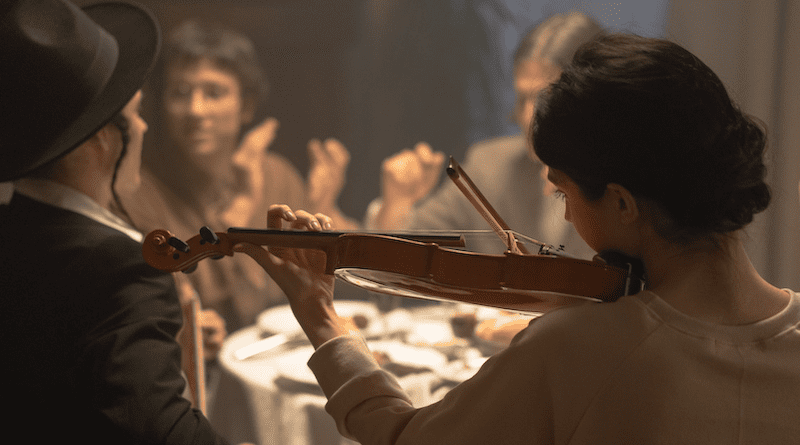Islam And Judaism On Religious Music – OpEd
The Qur’an is the basic source of legal authority for Muslims and it contains no direct references to music. Muslim legal scholars use hadith (oral saying and behavioral actions of Prophet Muhammad) as another source of legal authority, and have found conflicting evidence about music in it. The consensus that has emerged is that the audio arts fall into three broad categories: legitimate, controversial, and illegitimate.
Qira’at, the call to prayer, and religious chants are considered legitimate by everyone. Controversial audio arts include all types of instrumental music. Illegitimate audio arts are considered to be those that take people away from the commandments of Islam. Music that leads to drinking or licentious behavior is always considered illegitimate.
Hussein Rashid from Hofstra University points out that Persian Muslims have often been open to instrumental music. “The 15th century Persian mystical poet Jami says that in the Qur’an, when God says He is blowing life into the form of man (38:72) it should be understood that human beings are the first musical instrument. The famous Sufi poet Rumi (who used dance and flute music in the13th century) also plays with the idea of human beings as musical instruments.
“Rumi opens his work the Mathnawi, one of his most famous poems, with the lines, “Listen to the reed as it tells a tale,” It is also argued that Prophet David (who authored Psalms according to the Qur’an) and Prophet Solomon both had beautiful voices and sang freely”.
Prophet David’s Zabur contains many psalms that were sung in the Jerusalem Temple built by his son Prophet Solomon, that mention musical instruments. The closing psalm of the Zabur (#150) states: “Praise the Lord! Praise God in his sanctuary; praise him in his holy heavens! Praise him for his mighty deeds; praise him for his excellent greatness! Praise him with a trumpet sound; praise him with lute and harp! Praise him with tambourine and dance; praise him with strings and pipe! Praise him with sounding cymbals; praise him with clashing cymbals! Let everything that breathes praise the Lord! Halleluyah! (Psalms 150:1-6)
Drawing from these traditions, many Muslims have an understanding of the permissible audio arts. For the legally minded, the traditional consensus is that nothing can be forbidden that is not explicitly forbidden by the Qur’an or the Prophet. As a result, contemporary scholars including Ayatollah Ruhollah Khomeini issued legal rulings that audio arts that do not encourage people to go against the faith are permitted.
The earliest synagogal music was based on what was used in the first century Jerusalem Temple where the regular Temple orchestra consisted of twelve different kinds of instruments, and a choir of at least twelve male singers. The instruments included the kinnor (lyre), nevel (harp), tof (drum or tambourine), shofar (ram’s horn), ḥatzotzᵊrot (trumpet) and three varieties of pipe. The Temple orchestra also included a cymbal (tziltzal) made of copper and a pipe organ.
Since local synagogues could never have this kind of glorious music Rabbinic Judaism moved closer to later Islamic practice when in the centuries following the destruction of Jerusalem and its Holy Temple, Orthodox rabbis opposed the use of musical instruments in synagogue services, as a form of mourning for the destroyed Temple.
However, congregational acapella singing was always strongly encouraged by the rabbis because: “I will sing unto the Lord as long as I live.” (Psalm 104:33) So the Talmud says: “Song is obligatory in the ritual of the sanctuary.” (Talmud Arakin) and “Those who sing in this world will sing also in the next world.” (Talmud, Sanhedrin)
Hassidic Jews felt that congregational singing was so important to prayer that they began to use wordless melodies like bim bam to encourage everyone to sing together. As one of the greatest of the Hassidic rabbis said: “All melodies come from a source of sanctity.” “Music evokes the spirit of prophecy.” And “Nature is saturated with melody; heaven and earth are full of song.” (Rabbi Nachman of Bratslav)
With the founding of the State of Israel in 1948, American Jews showed increasing interest in Israeli music. This trend dramatically accelerated with the Six-Day War. “The practice of singing Israeli songs in American synagogues, camps, and at social gatherings, which spread in the 1950s, accelerated in the 1960s and 1970s as young American Jews looked to Israel as a positive model for Jewish identity, and the songs’ popularity also served as a Jewishly unifying factor.”
Largely influenced by the folk music revival of the time, in the 1960s and 1970s, a new genre of worship music grew out of the Reform Judaism summer camps. From almost the beginning of Reform Judaism synagogue worship, the music centered around the use of organ and choir. Now the new music was composed for acoustic guitar and group singing.” This new style focused on making the music “simpler, thoroughly democratic in its sing-ability, and playable on a guitar.” This influence is also clear in the music of Cantor Debbie Friedman and Rabbi Shlomo Carlebach who gained fame for bridging the folk world and traditional Jewish Hasidic tunes.

